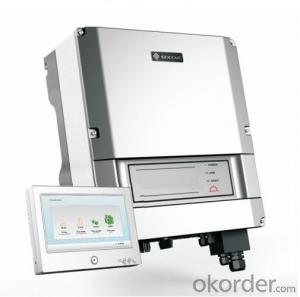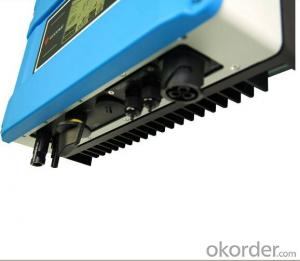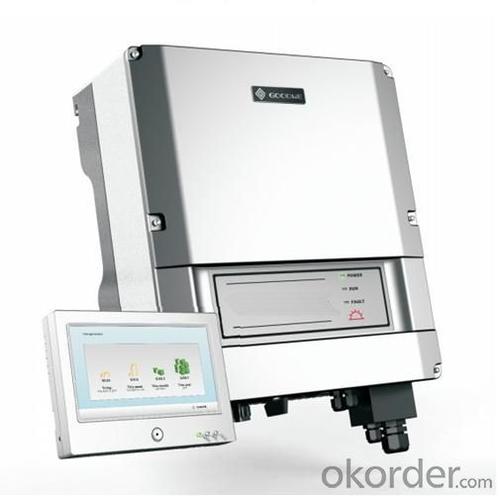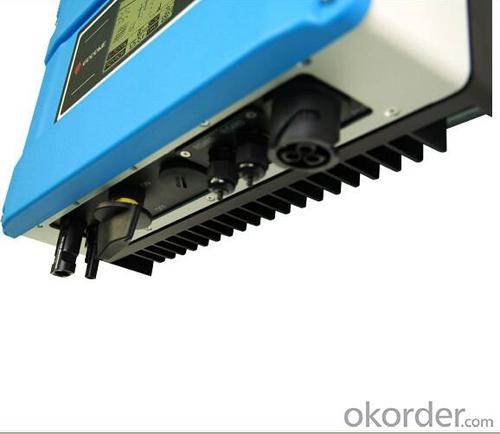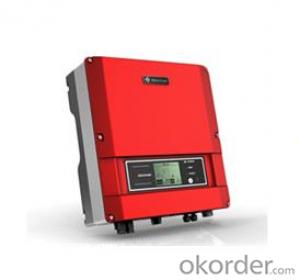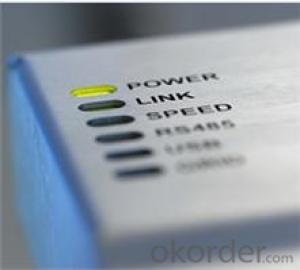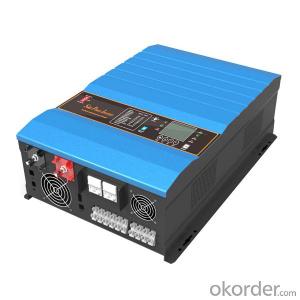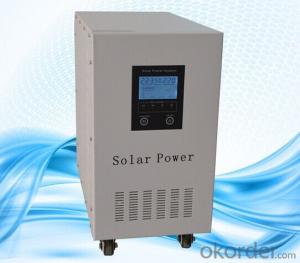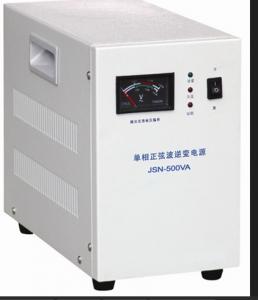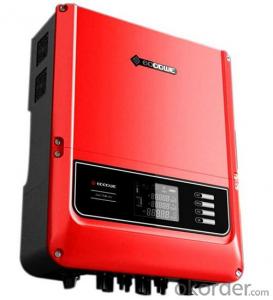Solar Inverter Solar Panel GW4000D-JP
OKorder Service Pledge
OKorder Financial Service
You Might Also Like
GW4000D-JP
JP Series Inverter is suitable to the domestic applications, and designed under modern ID concept, it has created a new standard for inverter technology with more advanced reactive compensation technology and dual MPPT trackers. Not only be able to connect with two phase grid system, this model but also could run as off-grid model, and the wide range of frequency of 50/60Hz makes it a good choice for Japan market. Moreover, the specialized monitor could perfectly control the inverter operation and data logging. IP65 high protective class of housing ensures the inverter work persistently and steadily under all critical environment.
Datasheet
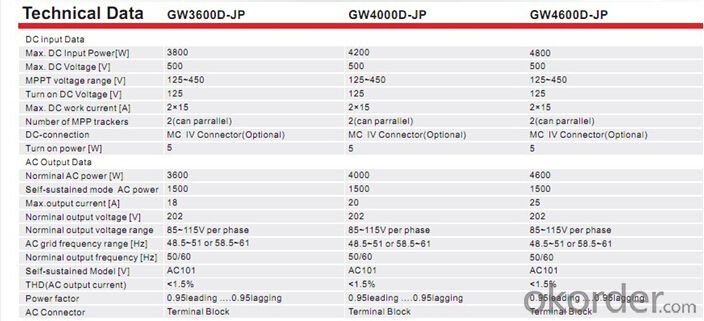
- Q: Can a solar inverter be used with solar-powered recreational vehicles (RVs)?
- Yes, a solar inverter can be used with solar-powered recreational vehicles (RVs). A solar inverter converts the DC (direct current) energy generated by solar panels into AC (alternating current) energy that can be used to power various appliances and devices in an RV. This allows RV owners to utilize solar energy for their electrical needs while on the road.
- Q: How does a solar inverter handle variations in ambient temperature?
- A solar inverter handles variations in ambient temperature by incorporating temperature compensation mechanisms. These mechanisms allow the inverter to adjust its operation and optimize performance based on the temperature conditions. By monitoring the temperature, the inverter can regulate voltage levels, adjust power outputs, and protect itself from overheating. This ensures that the inverter operates efficiently and reliably under different ambient temperature conditions.
- Q: What is the typical installation process for a solar inverter?
- The typical installation process for a solar inverter involves several steps. First, the inverter is mounted in a suitable location, usually close to the solar panels and near the electrical service panel. Then, the DC input wires from the solar panels are connected to the DC input terminals on the inverter. The AC output terminals of the inverter are then connected to the electrical service panel, allowing the generated electricity to be fed into the grid or used by the household. Finally, the inverter is connected to a monitoring system, which enables the user to track the performance and energy production of the solar system. It is important to note that the installation process may vary depending on the specific inverter model and the local electrical codes and regulations.
- Q: What are the potential risks of overloading a solar inverter?
- Overloading a solar inverter can lead to several potential risks. Firstly, it can cause the inverter to overheat, which can result in damage to the internal components and reduce its lifespan. Secondly, overloading can cause the inverter to shut down or trip, interrupting the solar power generation and potentially causing a power outage. Additionally, overloading the inverter may also compromise the safety of the electrical system, increasing the risk of electrical fires or other hazards. Therefore, it is important to ensure that the solar inverter is properly sized and not overloaded to avoid these potential risks.
- Q: Can a solar inverter be used with batteries?
- Yes, a solar inverter can be used with batteries. In fact, using a solar inverter with batteries is a common practice in solar energy systems. The inverter helps convert the direct current (DC) electricity generated by the solar panels into alternating current (AC) electricity that can be used to power various appliances and devices. When batteries are connected to the system, the excess electricity generated by the solar panels can be stored in the batteries for later use, allowing for continuous power supply even when the sun is not shining.
- Q: How does a solar inverter handle variations in solar irradiation?
- A solar inverter handles variations in solar irradiation by continuously monitoring the incoming solar energy and adjusting its output accordingly. It uses maximum power point tracking (MPPT) technology to ensure that it extracts the maximum power available from the solar panels under different irradiation levels. This allows the inverter to regulate the voltage and current output to match the varying solar conditions, ensuring optimal efficiency and power conversion.
- Q: What is the difference between an on-grid and off-grid solar inverter?
- An on-grid solar inverter is designed to convert the DC power generated by solar panels into AC power that can be fed into the electricity grid. It synchronizes the solar power output with the grid's frequency and voltage, ensuring a seamless integration and allowing any excess power to be exported back to the grid. On the other hand, an off-grid solar inverter is used in standalone solar power systems that are not connected to the grid. It converts the DC power from solar panels into AC power for immediate use or storage in batteries. These systems typically require additional components like batteries and charge controllers to manage power storage and supply during periods of low solar generation or high demand. In summary, the main difference between the two types of inverters is their purpose: on-grid inverters are used for grid-tied systems, while off-grid inverters are used in standalone systems not connected to the grid.
- Q: What is the role of a DC-DC converter in a solar inverter?
- The role of a DC-DC converter in a solar inverter is to convert the direct current (DC) generated by the solar panels into the appropriate voltage and current levels required for the inverter to convert it into alternating current (AC) electricity. The DC-DC converter ensures efficient power transfer and enables the solar inverter to maximize the energy harvested from the solar panels. Additionally, it helps regulate the voltage levels and maintain the stability of the solar power system.
- Q: How does a solar inverter handle shading or partial panel obstructions?
- A solar inverter handles shading or partial panel obstructions by utilizing maximum power point tracking (MPPT) technology. This technology allows the inverter to constantly monitor each individual solar panel's output and adjust the voltage and current to maximize power production. If shading or obstructions occur on one or more panels, the inverter can dynamically optimize the output of the unshaded panels, ensuring maximum efficiency and power generation despite the partial loss of sunlight.
- Q: Can a solar inverter be used in systems with different module types?
- Yes, a solar inverter can be used in systems with different module types. Solar inverters are designed to convert the direct current (DC) generated by solar panels into alternating current (AC) that can be used to power electrical devices. They are compatible with various module types, such as monocrystalline, polycrystalline, and thin-film solar panels, allowing them to be used in diverse solar energy systems.
Send your message to us
Solar Inverter Solar Panel GW4000D-JP
OKorder Service Pledge
OKorder Financial Service
Similar products
Hot products
Hot Searches
Related keywords
